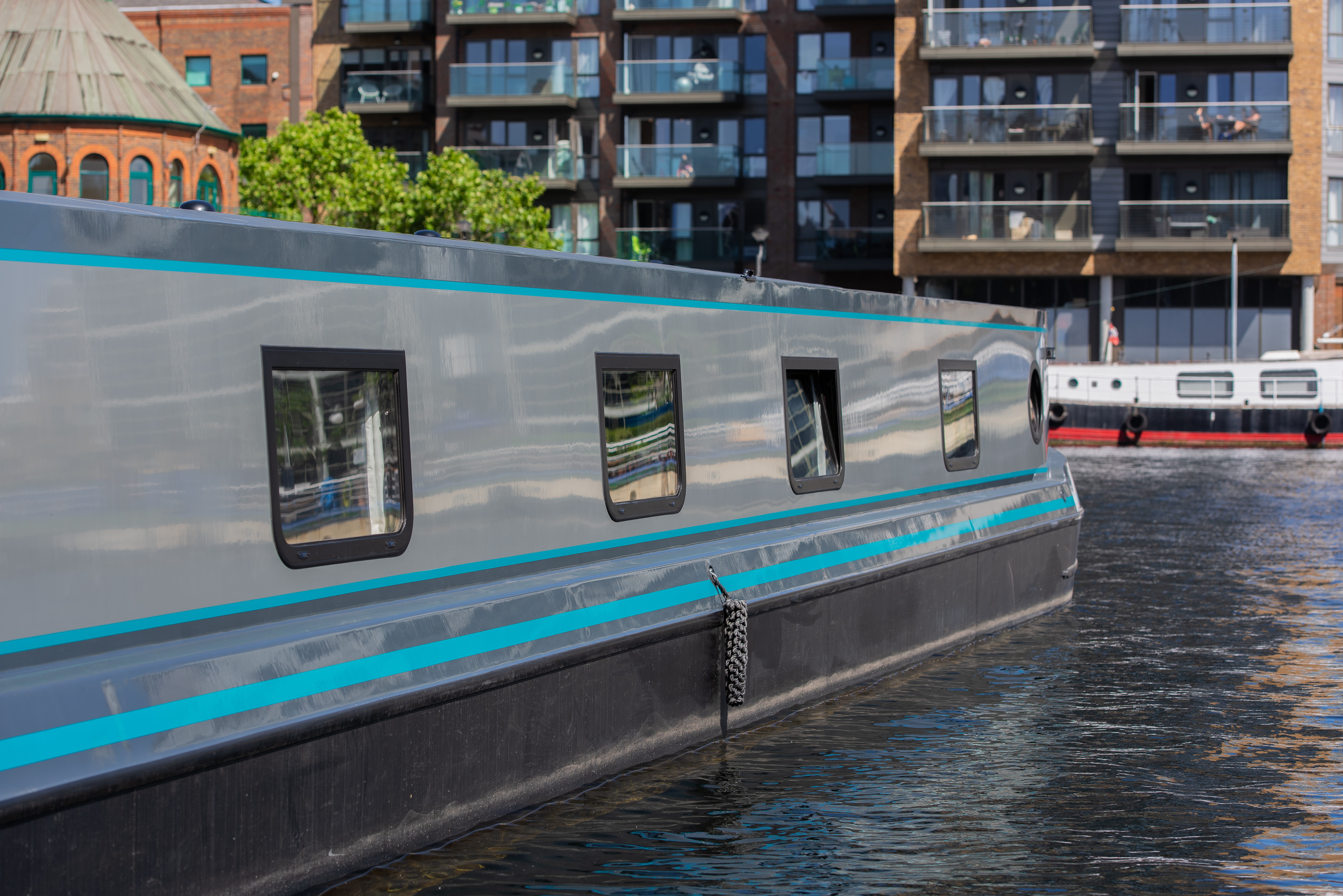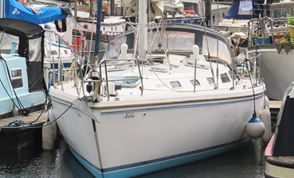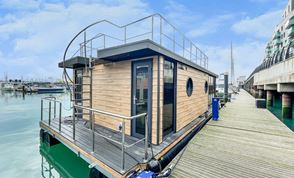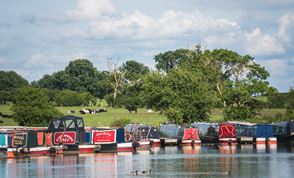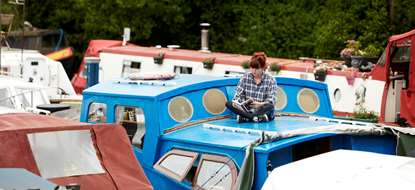Residential vs Liveaboard vs Long-Term Moorings - What’s the Difference?
As an affordable and alternative lifestyle, living on the water has become an increasingly popular option. And if you’re one of the thousands of people flocking to the water each year, this is the perfect guide for you.
If you’ve searched online, you may have encountered three common types of moorings:
- Residential moorings
- Liveaboard moorings
- Long-term moorings
But what do these mean, and which one is right for you?
In this guide, we’ll show you the differences between these mooring types and the costs and benefits involved in each. Let’s get into it:
What is a Residential Mooring?
A residential mooring is a designated space along a waterway where individuals can moor up with all the benefits of a permanent address.
This type of mooring is usually situated in marinas or along canals and is specifically intended for residential use.
Residential moorings provide a safe and secure base for those looking to make a boat their primary residence.
How Much is a Residential Mooring?
The cost of a residential mooring can vary quite a bit depending on factors such as location, included amenities, and the level of demand.
In popular areas like city centres, residential moorings are more expensive due to high demand and limited availability.
Residential mooring costs can range from a few hundred pounds to several thousand per month.
Along with the cost of mooring, other expenses like maintenance, utilities, and insurance will also need to be considered when evaluating the feasibility of living on a boat full-time. Sometimes the cost of the mooring may include some additional benefits like free laundry, pump outs and help with council tax.
Why Live on a Boat in a Residential Mooring?
Living on a boat offers many individuals a flexible, fun, and appealing lifestyle. But living on a boat in a marina can enhance the experience even further.
Aquavista has over 800 permanent residents at our quality marinas from across the UK.
And this is for five great reasons:
- Our marinas give boaters a registered UK postal address. This means registering for a GP, school, or insurance is just as simple as if you were living on the mainland.
- You get your own post box and storage box.
- We have an on-site crew ready to help when the need arises.
- There’s a close sense of community like any other street, with regular social events.
- Our residential marinas feature quality amenities you’d want from your home, including the likes of parking, laundrettes, modern toilets and shower facilities, refuse and recycling facilities, and even local shops.
Examples of Residential Moorings
In the UK, residential narrowboat moorings are popular along the extensive canal network that connects many parts of the country.
Cities like London, Birmingham, and Manchester have plenty of marinas and canals that offer residential moorings with different amenities and facilities.
Aquavista’s residential marinas are all located alongside popular cities and canal routes, making travelling as easy as possible.
Our most popular residential moorings and marinas include:
- Buckden Waterside & Marina in Buckden, Cambridgeshire
- Crick Waterside & Marina in Crick, Northamptonshire
- Cropredy Waterside & Marina in Banbury, Oxfordshire
- Kings Bromley Waterside & Marina in Lichfield, Staffordshire
- Priory Waterside & Marina in Bedford, Bedfordshire
- Sawley Waterside & Marina in Long Eaton, Nottinghamshire
- Ventnor Waterside & Marina in Rugby, Warwickshire
What is a Liveaboard Mooring?
So, you now know what a residential mooring is. But what about a liveaboard mooring?
A liveaboard mooring is another way to describe a residential mooring. Put simply, it’s a mooring that allows individuals to moor their boats and use them as a primary residence. In other words, it’s the same as residential moorings.
Liveaboard is most commonly used to describe a boat that someone lives on. A liveaboard mooring doesn’t usually have inclusive benefits and you cannot use it as a registered address.
What is a Liveaboard Boat?
A liveaboard boat is a type of boat made into a primary residence. It’s a floating home that provides the necessary amenities and comforts for long-term living.
Confusingly, the term liveaboard can also refer to boats used for recreational cruises, like scuba diving, where the divers will live on the boat for the duration of their trip.
At Aquavista, we use the term “liveaboard” to strictly mean a boat that’s been designed or converted into a floating home.
Although liveaboards commonly describe small yachts found in marinas, several boat types can be used as a liveaboard.
These include:
- Narrowboats
- Houseboats
- Dutch barges
- Sailboats
- Motor yachts
Long-Term Mooring
Long-term mooring involves mooring a boat for an extended period ranging from several months to several years.
Unlike residential and liveaboard moorings, long-term moorings are not exclusively made for full-time living.
Instead, many boat owners use long-term moorings for leisure boating and recreational purposes. Although they can still be used for full-time living,
How Much Are Long-Term Moorings?
The cost of long-term moorings can depend on many factors, including location, facilities, and length of stay.
Depending on the circumstances, long-term moorings can be more affordable than residential or liveaboard moorings since they don’t usually include the same services and amenities.
What's the Difference Between Residential and Leisure Moorings?
Those staying at long-term moorings who don’t live there permanently are usually described as leisure moorers. But what’s the difference between a residential mooring and a leisure mooring?
Residential moorings are specifically designed for individuals who make their boats their primary home.
To cater to the needs of residents, these moorings often offer a range of amenities and facilities like:
- Utilities (electric/wifi)
- Parking
- Waste disposal
- Laundry and showers
- Communal spaces
Leisure moorings cater to boat owners who use their vessels primarily for leisure activities, such as weekend getaways or holidays.
These moorings may offer more basic facilities and services but provide owners with a secure place to store their boats when not in use.
Leisure moorings can be more basic and may or may not include utilities or dedicated residential amenities, depending on the location.
Why Consider Leisure Moorings with Aquavista?
Aquavista is the number one provider of long and short-term leisure moorings across the United Kingdom, with a network of marinas and mooring sites that offer a range of benefits for boat owners.
Many of our marinas have a dual-purpose and provide long-term leisure moorings AND residential moorings.
Mooring your boat at an Aquavista location includes benefits such as:
Choice of Location
Aquavista has a broad range of marinas across the UK in some of the most desirable locations. Choose from:
- Coastal regions
- Riversides
- Canals
Many of our marinas provide easy access to popular boating destinations, areas of local interest, and nearby amenities.
Facilities and Services
Aquavista offers well-maintained facilities and services at their locations, including:
- Secure berths
- Electricity hook-ups
- Water supply
- Showers
- Laundry
- Wi-Fi
- 34 days of free stop-overs at any of our 29 marinas
- Regular community events
- Regular discounts for diesel, gas, and coal
These facilities ensure a comfortable and enjoyable experience for boat owners.
Community
Aquavista marinas attract all kinds of people, creating a vibrant and exciting boating community.
Boaters can connect with other boat owners, participate in social events, and share boating experiences.
Conclusion
Depending on the purpose or lifestyle, residential moorings, liveaboard moorings, and long-term moorings each cater to different water living types.
Those who wish to reside on a boat full-time may benefit from the amenities and community of a permanent residential mooring.
While boat owners seeking a secure and convenient location may find a long-term mooring more suitable.




